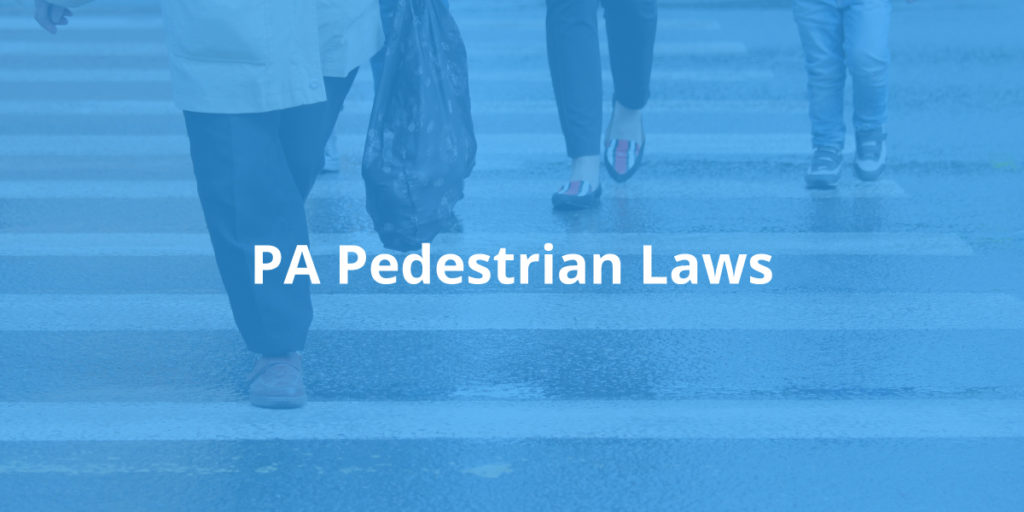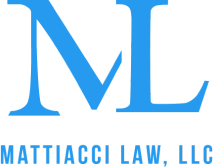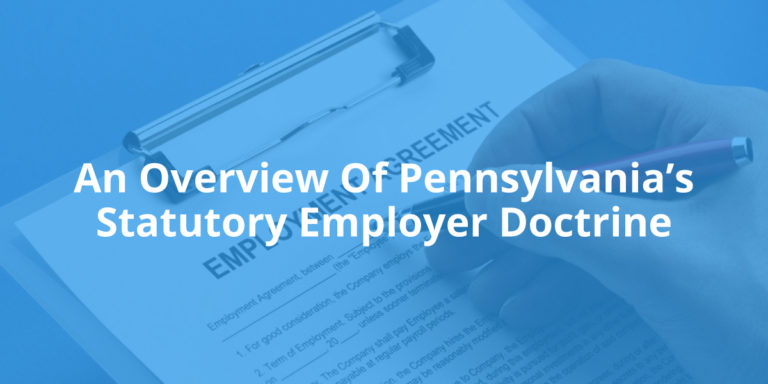
Like most states, Pennsylvania requires drivers to pass a written and practical test in order to obtain a driver’s license. Obviously, no such test is required to be a pedestrian — which may leave some people unfamiliar with our state’s many laws governing walking in and around traffic.
Understanding these laws is important, particularly given the relatively high number of pedestrian accidents that occur each year in Pennsylvania. These laws protect both drivers and pedestrians and help keep all of us safe on the roads.
Unless otherwise specified, a violation of Pennsylvania’s pedestrian laws is a summary offense, punishable by a fine of $5. While this is not a significant amount of money for most people, being charged with violating these laws can have a bigger impact on your life if you are involved in a pedestrian accident. As a Philadelphia pedestrian accident lawyer can explain, it may demonstrate that you were partially at fault for the collision.
What Laws Do Pedestrians Have to Follow?
If you are like many Pennsylvanians, the extent of your knowledge on the laws that pedestrians have to follow may be the following: “pedestrians have the right-of-way.” While pedestrians almost always do have the right of way, the actual law is a bit more involved. There are a number of rules for pedestrians when walking, running or jogging in Pennsylvania — all designed to keep us safe.
As an initial matter, pedestrians are required under Pennsylvania law to obey all traffic control signals. Pedestrians must also follow the directions of any officers directing traffic.
Generally, if there are no traffic control signals at an intersection, then drivers must yield the right-of-way to pedestrians crossing the road within any marked or unmarked crosswalk. However, pedestrians must exercise care in doing so and not run or walk into the path of an oncoming vehicle.
If a pedestrian crosses a road somewhere other than at a crosswalk in an intersection, they must yield the right-of-way to all vehicles. Similarly, if there is a pedestrian tunnel or overhead crossing, and a pedestrian chooses to not use these devices, they must yield the right-of-way to vehicles. In urban areas where traffic signals are in operation, pedestrians must use marked crosswalks.
Pedestrians are prohibited from crossing intersections diagonally unless they are authorized by a traffic control device or by a police officer or other officer directing traffic. They are also barred from soliciting rides or business by standing on the road or standing on the road to watch or guard a vehicle or parking space.
Pedestrians walking along or on a highway should use a sidewalk if it is provided and it is practical to use it. Otherwise, pedestrians should walk on the shoulder as far away from the road as possible, or if there is no shoulder, on the outside edge of the roadway, on the left side. If walking on a roadway, pedestrians should yield the right-of-way to vehicles on the road.
Importantly, pedestrians who are under the influence of alcohol or drugs to such an extent that they are a hazard shall not walk or otherwise be on a highway unless they are on a sidewalk. This law — like most of the laws regarding pedestrians in Pennsylvania — is specifically designed to ensure pedestrian safety.
Pedestrians are also required to yield the right-of-way to emergency vehicles approaching imminently and using audible and visible signals. This requirement does not excuse drivers of emergency vehicles from their duty to exercise care when driving.
Finally, pedestrians must comply with bridge and railroad warning signals. Violating this section — such as bypassing over or under a crossing gate or barrier — is a summary offense, punishable by a fine of between $50 and $100.
As you can see, while pedestrians do almost always have the right of way there are still situations when pedestrians may need to yield to vehicles in certain circumstances. Knowing and following these laws can help keep you safe as you walk, jog or run around your Pennsylvania city or town.
What Laws Do Drivers Have to Follow?
In Pennsylvania, drivers also have to follow the law when it comes to sharing the road with pedestrians. It is arguably more important for drivers to do so, given the difference in size and speed between motor vehicles and pedestrians. If a car hits a pedestrian the car invariably wins.
As noted above, at intersections without traffic signals, drivers are required to yield the right-of-way to pedestrians. If a driver is stopped to allow a pedestrian to cross the road, other vehicles are prohibited from passing the stopped vehicle. Failure to yield right-of-way in a marked or unmarked crosswalk is a summary offense punishable by a $50 fine.
When pedestrians are on sidewalks, drivers must yield the right-of-way. This means that when drivers are emerging from or entering an alley, building, private road or driveway, they must yield to pedestrians approaching on sidewalks.
Drivers must yield the right-of-way to any pedestrians who appear to be totally or partially blind by virtue of carrying a visible white cane or being accompanied by a guide dog. Drivers should take all precautions to avoid injuring blind pedestrians, including stopping their vehicle if necessary. A violation of this law is a summary offense punishable by a fine of between $50 and $150.
Where safety zones have been established, drivers cannot drive through or within these zones. However, traffic can move on either side of a safety zone unless prohibited. Following this rule — and the above laws — can help to keep pedestrians safe in Pennsylvania.
The Danger of Pedestrian Accidents in Pennsylvania
Although Pennsylvania has extensive laws governing how pedestrians and motor vehicles interact on our streets and roads, far too many people are injured and even killed each year in pedestrian accidents. In many cases, these crashes are caused by drivers failing to pay attention or follow the rules of the road.
According to the Pennsylvania Department of Transportation (PennDOT), in 2017, there were 4,256 pedestrians involved in motor vehicle accidents. Of those pedestrians, 150 people were killed. 4,106 pedestrians were injured.
Although pedestrian-related crashes represent just 3.2% of the total accidents in Pennsylvania, they account for 13.2% of all fatalities. This tells us that accidents involving pedestrians are more likely to be deadly. Most pedestrian accidents happen in cities (64.2%), but more fatal accidents happen in rural areas (53.3%), such as townships.
Most pedestrian accidents happen when an individual was entering or crossing at a specified location, such as an intersection, mid-block or at a driveway entrance. This type of accident accounted for 41.4% of all crashes involving pedestrians in 2017 and 44% of all fatal pedestrian accidents. After crossing or entering, walking, running, jogging or playing is the most common action taken by pedestrian before an accident (29.6% of all collisions).
It is because of these severe consequences that following Pennsylvania laws is so important. It is also critical to pay full time and attention while driving, walking, jogging or running. Doing so could save your life — or the life of someone in your community.
Pennsylvania Pedestrian Accidents
Pennsylvania’s pedestrian accident laws aim to prevent pedestrian-involved collisions. By requiring pedestrians to use crosswalks and drivers to stop for them, the Commonwealth reduces the number of serious injuries and deaths related to vehicle collisions.
However, pedestrian accidents still occur with unfortunate regularity. Congested roadways, poor driving habits, and careless or reckless walkers or cyclists sometimes come together to create a catastrophe.
What Are the Most Common Causes of Pedestrian Accidents?
Most auto accidents occur because of human error. Pedestrian accidents provide no exception. In most cases, the driver, pedestrian, or both were negligent, resulting in the incident.
Common causes of pedestrian accidents include the following:
Driver Inattentiveness
Inattentive drivers wreak havoc on the roads, especially in congested and difficult-to-navigate areas. Often, a moment’s slip in concentration causes a driver to miss a pedestrian crossing the road, and an accident occurs. In addition, when sharing the lane with runners or cyclists, inattentive drivers may stray from the lane’s center.
Fatigued Driving
Fatigued drivers may find themselves in a state of half-consciousness. For pedestrians, this spells trouble. A partially conscious driver may intrude into a crosswalk, weave, or have slowed reactions.
Drunk or Drugged Driving
It’s no surprise that many pedestrian accidents result from drunk or drugged driving. Navigating roadways with traffic and pedestrians takes having your wits about you. When drugs or alcohol dull those wits, it’s far too easy for a driver to react with fatal slowness. In addition, drunk or drugged drivers may misjudge speed and distance, causing them to drive too closely to pedestrians and strike them.
We’ve all seen a driver that weaves. Usually, this is a momentary lapse quickly corrected. However, drunk drivers weave because they cannot properly control their movements and hence steer unsafely. For pedestrians, an intoxicated motorist who is all over the road presents a mortal hazard.
Darkness
Once the sun sets, pedestrians should take extra care. On darkened streets, motorists cannot see pedestrians from a long distance. Walkers should assume that once a vehicle is close enough for the driver to realize they are there, it’s probably too late for the motorist to come to a complete stop. Therefore, pedestrians should cross dark streets with care and use crosswalks, bridges, or pedestrian tunnels whenever possible.
Cyclists, runners, and joggers should wear reflective clothing at night. Though you may be proceeding with traffic, drivers still cannot make out a dark silhouette until they are very close. With reflective gear, drivers can see you from a long distance.
Poorly Maintained Vehicle
When a vehicle’s tires and brakes are up to date, the motorist can force it to a stop relatively quickly. However, worn brakes and tires can make it impossible for the motorist to stop before it’s too late. A well-maintained vehicle can make the difference between a near miss and a tragedy.
Careless Pedestrians
Drivers are not always to blame, at least not entirely. Pedestrians also have a duty of care. They must cross streets carefully and avoid entering the path of an oncoming vehicle.
Unfortunately, too many people take their lives in their hands and cross busy roadways when traffic is coming way too fast. To most people, vehicles seem further away than they are. In addition, it’s difficult for an observer to judge the speed of a vehicle moving toward them. On high-speed roads, they almost always bear down on you sooner than anticipated.
Pedestrians should never cross highways and other busy roadways, especially at night. Pedestrian bridges and crosswalks at intersections with stop lights provide a safe harbor for pedestrians to get around difficult areas.
What Types Of Injuries Are Seen In Pedestrian Accidents?
Pedestrian accidents often result in life-altering injuries. A person has no protection against an oncoming vehicle, so walking away from an accident unscathed is rare, even at relatively low speeds. Broken bones, sprains, and head injuries are common even in parking lot car-to-pedestrian accidents.
Common injuries seen in pedestrian accidents include the following:
- Broken bones
- Lacerations
- Head injuries
- Pelvic injuries
- Spinal damage
- Eye wounds
- Road burn
- Crushing injuries
- Dental damage
What Damages & Compensation Can Be Recovered In a Pedestrian Accident Lawsuit?
Many types of damages are recoverable for victims of pedestrian accidents. The law provides for three categories of damages: economic, non-economic, and punitive.
Economic damages consist of the direct financial costs born by the victim, such as medical bills and lost income. Examples include the following:
- Ambulance transport
- ER bills
- Diagnostic testing
- Medications
- Hospital stays
- Dental work
- Doctor visits
- Physical therapy
- Occupational therapy
- Lost wages
- Lost business income
- Lost benefits
Non-Economic Damages
- Pain and suffering
- Emotional distress
- Loss of enjoyment of life
- Loss of consortium
Punitive Damages
Courts rarely award punitive damages in a personal injury case. Punitive damages serve to punish the defendant for some outrageous action and provide deterrence.
Most personal injury claims result from accidents, not ill intent or outrageous conduct. However, cases of malicious activities, such as striking someone intentionally, or reprehensible recklessness, such as extreme DUI, may qualify for punitive damages.
How a Philadelphia Pedestrian Accident Lawyer Can Help
At Mattiacci Law, we know how terrifying a pedestrian accident can be, and how difficult it may be to recover from your injuries. We are here to help.
Our team has recovered tens of millions of dollars in verdicts, settlements, and awards on behalf of our clients. We fight for victims of all types of accidents, including pedestrian accidents, and advocate to help them get the compensation that they deserve. To learn more or to schedule a free initial consultation, contact us today at 215-914-6919 (Philadelphia office) or email us.
Related Content: New Jersey Pedestrian Laws
Categories
- Bicycle Accidents
- Brain Injuries
- Burn Injuries
- Bus Accidents
- Car Accidents
- Construction Accidents
- COVID-19
- Dog Bites
- Drunk Driving
- Injury Insurance
- Medical Malpractice
- Motorcycle Accidents
- Pain and Suffering
- Pedestrian Accidents
- Personal Injury
- Premises Liability
- Product Liability
- Rideshare Accidents
- Slip and Fall
- Truck Accidents
- Worker's Compensation
- Wrongful Death
Recent Posts
- How Much is a Shoulder Injury Settlement Without Surgery Worth in PA?
- What Are the Differences Between Truck and Car Accidents in Pennsylvania
- Are Personal Injury Settlements Considered Marital Property in PA?
- What Is the Average Accident Injury Settlement in New Jersey?
- Herniated Disc Car Accident Settlement Amounts in PA



